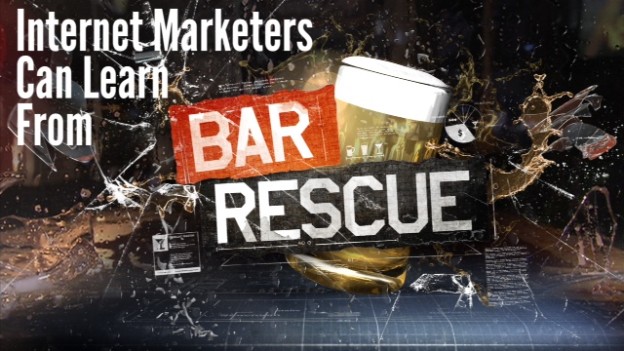
Customers today have something in common: it’s ridiculously easy to leave a business for another. You can walk down the street to another bar, or tweet to another business that will engage with you. Long live loyalty much? Not anymore. There are three massive mistakes commonly exposed on Bar Rescue to understand to avoid losing customers:
Disengaged Leadership
The unengaged owner or manager is usually the repeating offender who doesn’t help or listen to the employees. They’ve been caught staying in the crowd squealing like a drunk patron. In other words, neglecting the business. This is one of the biggest mistakes a small business could make. In some situations, bartenders who have poured sweat and blood in the business end up running the bar. The best employees know to ask management or the owner for assistance and if they respect their employees and customers, they will get their hands dirty. Even if it means stocking inventory or washing glasses (plastic cups forbidden – people are not paying for a stroll down memory lane back to college). Taffer also encourages them to socialize, show gratitude and gather feedback from customers (soberly) but not at the expense of struggling bartenders.
I really dig it when leaders get involved by their own social media activity, writing, or at least interact with other departments with a genuine interest in the customer AND employee happiness. Effective communication allows employees within all levels of an organization to verbalize what is or isn’t working. I was impressed with the commotion when Elon Musk of Tesla came out with his post A Most Peculiar Test Drive criticizing the New York Times. It just revealed how much he’s into listening to other conversations and his heart for his business. Social media as a silo in business is a common pain point so here are five tips to get CEOs started to read – or pass along.
Ignoring Customers
Oracle recently reported in a study 81% of consumers are willing to pay for a better experience. Taffer stresses the magic happens when you create an reaction. Contingent on the location and branding, a unique drink menu (A Coal Dust anyone?) and menu are usually formed. But not before a stress test to reveal performance abilities of all employees and the patron experience. If any worker is pessimistic or slow, they need work. The show’s experts repeatedly emphasize that speed influences the experience. If service is slow, it ruins the connection. In fact, a simple drink ought be served within 30 seconds or three speciality drinks could be shaken or stirred within three minutes.
Listening and monitoring online for reactions of your customers, competitor’s customers and potential leads is imperative. When you monitor, you understand what makes them tick or happy then you can be proactive about creating your services/product to cause a positive experience associated with your brand. For internet businesses, social media is a primary channel for customer service, and response should be done in a timely manner without sacrificing quality. Sometimes I still get shocked at the disturbingly low percentage of businesses that interact to their consumers on social media. The Acquity Group reported in the 90% of large brands on social media, only 29% actually engage. No!
Lack of Maintenance
A common mistake uncovered by Taffer is lack of cleanliness, structure and navigation. Sometimes the premium bottles aren’t on display so the opportunity for extra revenue is lost. Or the refrigerators are placed smack in the middle of the bar which disturbs movement (solution: reach-in cooler). If it’s difficult to get around, locate drinks or seating, customers will leave.
Consider the presentation of your website – especially your homepage, which should display your prominent features without clutter. A good rule of thumb is to limit your navigation bar to seven descriptive tabs and have two colors: a neutral and action color. Visitors will drop off if it requires too much effort. Maintenance is also like online monitoring. Do you have command center where someone can stay updated on conversations in social media and visitor traffic to get some insight what’s attracting or repelling customers? If time demand is a concern, there’s no reason expectations for social customer service can’t be outlined in your social media profiles. Cleanliness on the web is keeping your information updated while consistently listening, otherwise you’ve got a mess of customer reactions waiting to be tackled down the road. The Burger King Hack fiasco is the best and freshest example of a monitoring blimp!
Bar goers and online consumers thrive for one major reason: real time communities. Delayed response or service from employees/leadership is delayed gratification so keep your eyes peeled.
With these practices, you won’t need rescuing.
P.S. Bar Rescue airs on Spike Sunday nights. Prost, Cin Cin or Cheers!



